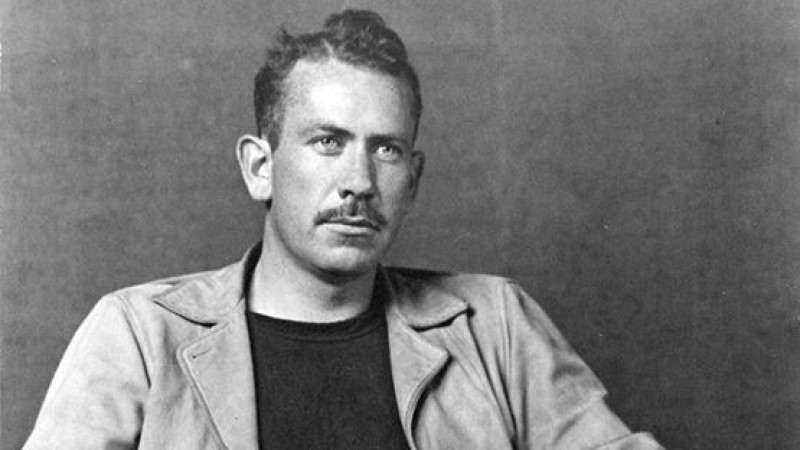
John Steinbeck is one of the most revered American literary figures and the author of numerous “classic” books that are routinely assigned in high school and college classrooms. Born in 1902, Steinbeck left college and worked as a manual laborer while trying to learn the craft of writing. Extremely prolific, he authored more than 30 books, including 16 novels, six non-fiction books, and two collections of short stories. His 1939 novel "The Grapes of Wrath," about the migration of a family from the Oklahoma Dust Bowl to California, won a Pulitzer Prize and a National Book Award. Seventeen of his works, including "Cannery Row "(1945), "The Pearl" (1947), and "East of Eden"(1955), were made into Hollywood films. During World War II, Steinbeck served as a war correspondent. His work often extensively explored economics and social issues, earning him the moniker "The Conscious of America" and the Nobel Prize for Literature in 1962.
Following graduation from a high school in California, Steinbeck enrolled at Stanford University in 1919. This decision, however, was motivated by a need to please his parents. Already Steinbeck had resolved to become a writer, which meant that he put very little stock in a university education. Instead of trying to finish a degree at Stanford, he mainly took courses which interested him, including writing, literature, and a smattering of science courses. At Stanford, the president of the English Club recalled that Steinbeck, who regularly attended meetings to read his stories aloud, "had no other interests or talents that I could make out." In fact, during the six years that he was enrolled at the University, the soon-to-be famous writer only accumulated 93 units, giving him the status of a junior. He left in 1925.
Despite his lack of degree, Steinbeck nevertheless remained connected to his alma mater in multiple ways. For starters, in 2022 the University will host The Steinbeck Institute, an intensive three-week summer workshop that focuses on the work of Steinbeck. The program is funded by a grant from the National Endowment for the Humanities.
On top of that, since the 1970s, Stanford has been systematically building its archive of Steinbeck's material, which includes a major collection of manuscripts, letters, photographs, and books by the author. The invaluable materials also contain a 1962 letter the author penned for Edith Mirrielees, a pioneering teacher in creative writing who greatly influenced Steinbeck as a young man. "Although it must be a thousand years ago that I sat in your class in story writing at Stanford, I remember the experience very clearly. I was bright-eyed and bushy-brained and prepared to absorb from you the secret formula for writing good short stories, even great short stories. You canceled this illusion very quickly."
